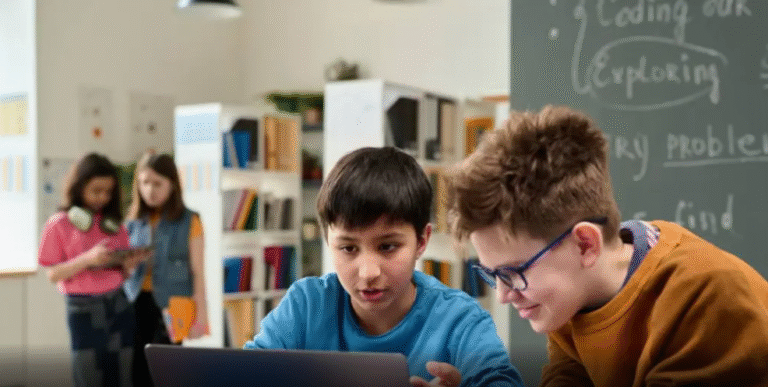The concept of Duaction can be interpreted as a combination of two essential elements: “Dual” and “Action”. While this term is not universally recognized in mainstream education theory, we can explore it as a framework for effective learning and personal growth. Let’s break down Duaction and explore how its components duality and action can provide the perfect key to learning and growth.
Duality in Duaction: The Power of Two Perspectives
The dual aspect of Duaction suggests the importance of approaching learning from two complementary perspectives. In this context, duality can represent a balance between two critical components that contribute to effective learning:
Theory vs. Practice:
- Theory refers to the understanding of concepts, principles, and ideas. It’s the foundation upon which practical application can be built.
- Practice is the act of applying theory in real-world scenarios, which reinforces the learning process and ensures that knowledge is retained.
A balanced approach to learning involves understanding theoretical concepts and simultaneously applying them in real-life situations. This combination of theory and practice can lead to deeper understanding and long-term retention of knowledge.
Active vs. Passive Learning:
- Active learning involves engaging with the material through problem-solving, critical thinking, and discussion. It’s about actively processing information and constructing knowledge.
- Passive learning refers to activities like reading, listening, and watching, where the learner receives information but may not engage deeply with it.
Duaction emphasizes the balance between both active and passive learning, where passive activities provide the foundation for active engagement. By alternating between these modes, learners can ensure they gain comprehensive knowledge while applying it effectively.
Action in Duaction: The Importance of Taking Steps
Action is a critical component of Duaction and represents the application of knowledge and the continuous improvement necessary for growth. Here, action is about turning ideas into tangible outcomes through specific behaviors and tasks.
Goal Setting and Achievement:
Effective learning and growth come from setting clear goals and actively working towards them. Duaction emphasizes action-oriented learning, where learners set measurable, achievable objectives. These goals provide direction, while actions taken towards achieving them build progress.
For example, a student might set a goal to master a new programming language. The actions to achieve this goal might include:
- Taking an online course (passive learning).
- Writing code (active learning).
- Collaborating with others on coding projects (social learning).
Feedback Loop:
Action also ties into the feedback loop, where learners act, reflect, and adjust based on feedback. This process of trial and error fosters continuous improvement and allows learners to build on their experiences. By acting and receiving feedback, learners can refine their skills and improve their approach to learning.
Duaction and Effective Learning
To optimize learning and growth, Duaction encourages an integrated approach where action is the vehicle for theory and practice is the bridge to reflection. Here’s how Duaction can be applied to maximize effective learning:
Active Engagement with Content:
Rather than passively reading or listening to content, Duaction suggests that learners engage with the material actively. This could include:
- Asking questions.
- Discussing topics with peers or mentors.
- Experimenting with new skills.
Engagement ensures that learners are not only absorbing information but also processing and internalizing it.
Iteration and Repetition:
Learning doesn’t happen in a single step; it’s a continuous process. Duaction involves repetition and iteration the act of trying, failing, learning, and trying again. By taking consistent action, learners reinforce their knowledge and improve over time. This cycle promotes mastery and builds self-confidence.
Accountability:
Taking action also fosters accountability, whether through setting personal deadlines, tracking progress, or sharing goals with others. Accountability increases motivation and commitment to learning, ensuring that goals are met and obstacles are overcome.
Duaction and Personal Growth
Personal growth is the culmination of consistent learning and action. Duaction plays a crucial role in shaping personal development by:
- Building confidence through the success of small actions.
- Fostering resilience by learning from failure and trying again.
- Enhancing self-awareness by continuously reflecting on progress and areas for improvement.
Self-Reflection and Adaptation:
Self-reflection is a key action in Duaction. After taking action, it’s important to reflect on outcomes, assess performance, and identify areas for improvement. This reflective practice helps learners adapt and grow, honing their skills and knowledge over time.
Building Habits for Success:
Duaction also helps establish productive habits. When learners repeatedly engage in both action and reflection, they build positive habits that contribute to success. These habits might include daily reading, journaling, exercising, or regularly reviewing progress toward goals. Consistent small actions lead to sustained growth.
The Duaction Framework for Learning and Growth
To apply Duaction effectively, learners can follow a simple framework that includes four steps:
- Set Clear Goals: Define what you want to achieve, whether it’s mastering a new skill, learning a new concept, or improving an existing capability.
- Learn and Engage: Begin with foundational knowledge (passive learning), and then apply what you’ve learned through hands-on experiences (active learning).
- Take Action: Act on what you’ve learned. Experiment, apply, and iterate your skills.
- Reflect and Adjust: Regularly evaluate your progress, receive feedback, and adjust your approach to continue improving.
By integrating these steps, Duaction provides a structured approach to achieving both learning and personal growth.
Conclusion: Duaction as a Key to Learning and Growth
Duaction is a powerful approach that blends the duality of theory and practice with the action required for growth. By engaging in both passive and active learning, setting goals, taking consistent action, and reflecting on progress, individuals can unlock their full potential and achieve meaningful growth. Duaction is not just about gaining knowledge it’s about applying that knowledge in a dynamic, iterative process that fosters improvement, resilience, and mastery. Whether in academics, personal development, or career advancement, Duaction serves as the perfect key to success and fulfillment.

